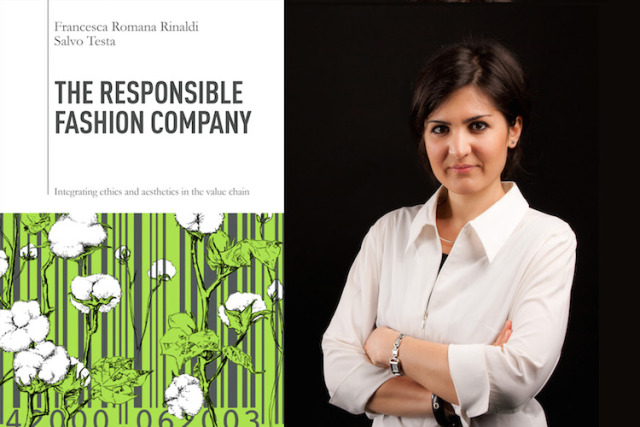Francesca Romana Rinaldi, co-author with Salvo Testa of “The Responsible Fashion Company”, dives into the many issues that stand as barriers to a more sustainable fashion industry.
Fashion and food have many things in common, not just their initial letter.
For example the agricultural origin of the raw materials: cotton, hemp and flax are classified as agricultural products. Fashion’s connection with other non-food sectors is most tangible with regard to cosmetics: natural and organic cosmetics allow the valorisation of agricultural products such as honey, propolis, citrus fruit and bergamot (essential oils), lavender and other officinal herbs.
In the last decades fashion companies started their journey towards responsibility.
Working towards more responsible fashion means trying to answer the specific needs of all the stakeholders: environment, society, workers and consumers, art, culture, territory, media, institutions. This is what gives responsible fashion so much potential; but this is also what makes being responsible very complex.
A more transparent and traced fashion: this is the direction the industry is taking.
But fashion was not the first industry to start this traceability path: the food industry can be considered as pioneer.
As in fashion, the food industry’s supply chain has experienced intense internationalisation over the last few years, with large food companies moving production to developing countries. For this reason, the values of environmental and social sustainability are becoming increasingly important: organic certification, Fairtrade and SA8000 all help towards reducing unfair competition between countries with different legislative guarantees.
Safety is an increasingly important factor and is considered in a very different way by different stakeholders. Pesticides and chemical additives are an important tool for increasing productivity in the fields; however, it is crucial for the health and safety of consumers to protect against and prevent side-effects and illnesses resulting from ingestion and skin contact with these substances.
However, some elements distinguish the two sectors, such as the presence of stricter rules on food and its labelling, the greater importance of health and safety, deriving from the different ways a product is used: worn in the case of fashion, ingested in the case of food.
Of course attention to safety is greater within the food industry as non-compliance with minimum safety standards has a much more immediate effect, as seen in the cases of excessive methanol content in wine, or with BSE (Bovine Spongiform Encephalopathy) or dioxin contamination elsewhere. In other sectors these standards are less stringent because they do not directly affect people’s health.
The big potential, for both industries, is related to the creation of ‘shared value’ and the interaction between demand and supply is needed to start the virtuous cycle.
Regarding the demand, there are some strong signs that many consumers are ready.
Consumers all over the world are becoming increasingly attentive to the environmental and social impact of the products they buy. They belong to the niche often known as ‘cultural creatives’ or LOHAS (Lifestyles of Health and Sustainability).
When we speak of LOHAS we refer to a type of consumer that pursues, through daily choices, a lifestyle based on ecological sustainability and on attention to their own health and that of the planet.
Consequently, when shopping, this consumer always chooses carefully, is aware of the importance of quality and of the origin of products – and that includes fashion products.
Understanding LOHAS customers – and segmenting them – is fundamental for the companies to be successful. Are they addressing a “fundamentalist”, a “health fanatic”, a “fashionista” or “moderate” consumer?
The book “The Responsible Fashion Company” (Greenleaf Publishing, 2014) has been written for LOHAS consumers, with the intention of raising awareness and providing information on how to manage responsibility in fashion.
In short it is about how to be a more informed and proactive consumer. It is all about integrating ethics and aesthetics in the value chain.
About the Author
Francesca Romana Rinaldi is co-author with Salvo Testa of “The Responsible Fashion Company”, Greenleaf Publishing, 2014. She is professor of competitive strategy in creative industries and fashion management at Bocconi University in Milan, and is a faculty member of the Luxury & Fashion Knowledge Center at SDA Bocconi School of Management and the Master in Fashion, Experience & Design Management. Since 2013 she is Director of the Master in Brand & Retail Experience Management at Milan Fashion Institute (intra-university consortium between Bocconi University, the Catholic University of Milan, and the Polytechnic University of Milan).
She is also an international consultant for companies in the fashion and luxury sector, mainly on topics regarding digital strategies, brand management, and business sustainability. She started the Bio-Fashion blog (http://bio-fashion.blogspot.com) in 2010 with the intention of raising awareness and providing information on themes pertaining to fashion and sustainable lifestyles. It is followed by companies, opinion leaders, and associations. A freelance journalist, she contributes to several specialised magazines both in Italy and abroad.



